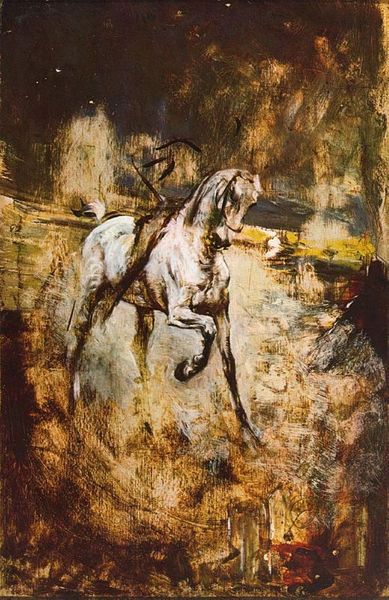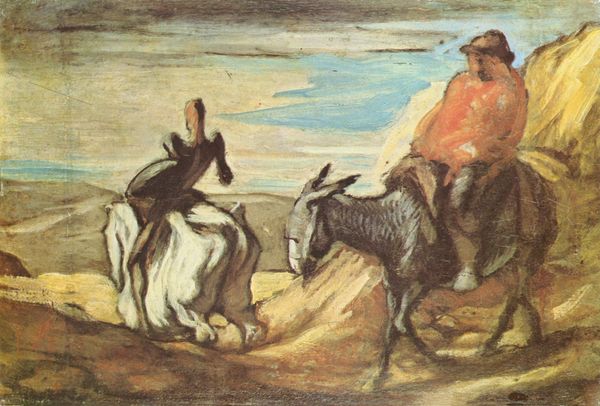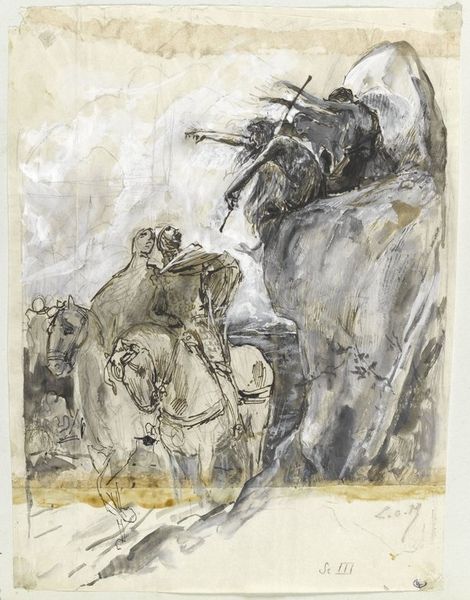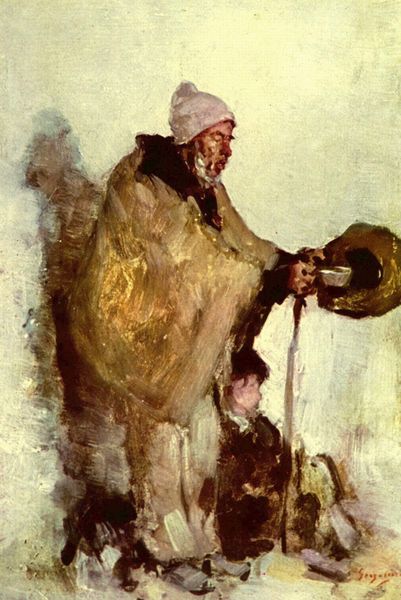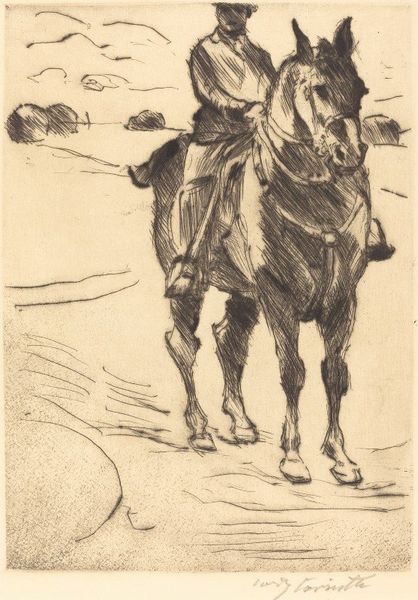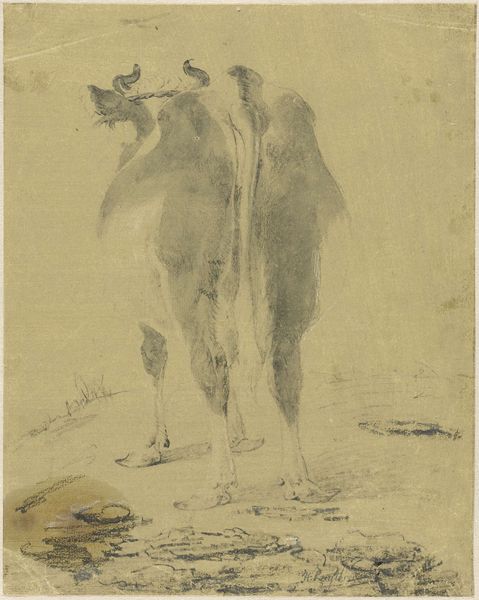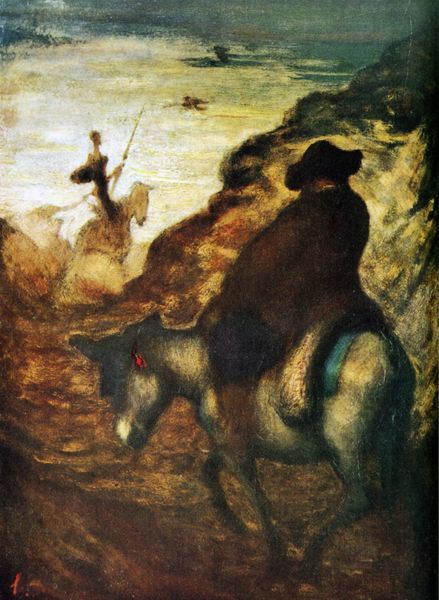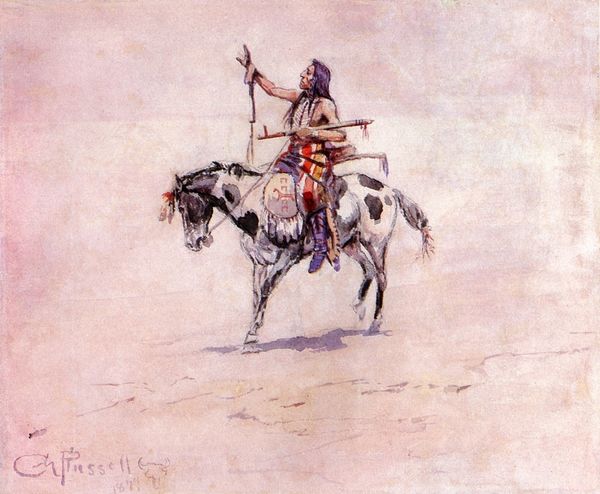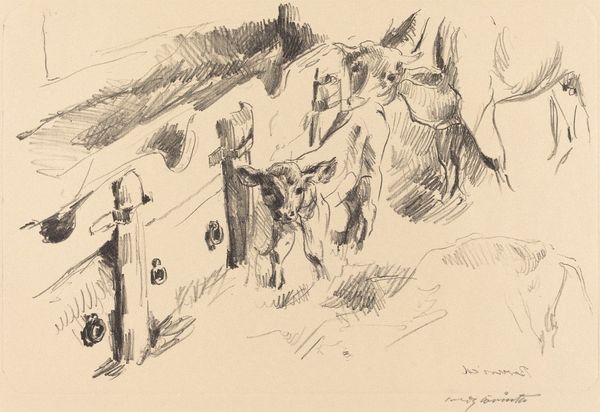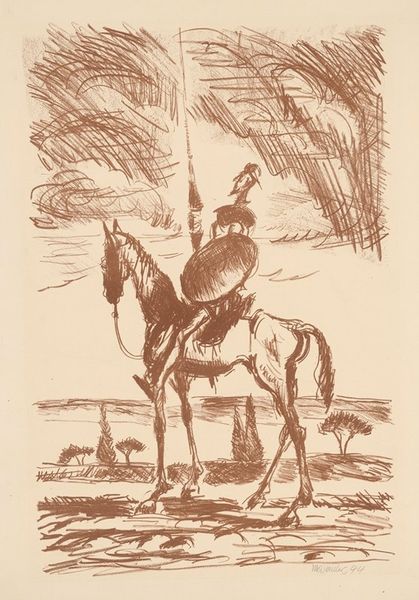
Dimensions: 132.5 x 54.5 cm
Copyright: Public domain
Curator: Ah, another journey gone awry. Look at this drawing from 1867, “Don Quixote, Sancho Pansa and the Dead Mule” by Honoré Daumier, held at the Musée d'Orsay. Editor: Bleak. Utterly bleak. A romantic’s tragedy played out in muted grays and browns. The dead mule is just sprawled there like discarded potential. What's your read on this scene, personally? Curator: There's something beautifully tragicomic about it. Daumier captures the utter deflation of grand ideals. The charcoal, so expressive and almost violent in its application, mirrors the chaotic, tilting world Don Quixote inhabits. His dreams often lead to this—failure, exhaustion, even death, rendered with an underpainting suggesting watercolor and oil paint. It's a very human condition that he renders tangible and quite real. Editor: Indeed. Think about the socioeconomic context. France was in turmoil during this period, grappling with rapid industrialization and political upheaval. Daumier, known for his social commentary, might be using Quixote’s plight as an allegory for the disillusionment of the working class—a populace chasing windmills of their own while capitalism leaves them, well, dead in the dust. A harsh indictment, no? Curator: Absolutely! But Daumier had a soft spot for dreamers. It's in the tenderness with which he renders the weary faces of Quixote and Sancho, despite the looming landscape—that even includes elements of romanticism. The contrast of scale: immense, indifferent, sublime but somewhat removed from realism. Editor: The vast, unforgiving landscape... it's almost mocking their ambition, wouldn't you agree? This is genre-painting, figuration in the extreme—all in service of showing just how easily the body can be crushed under the weight of dreams. Curator: I feel Daumier is ultimately reminding us that even in failure, there is a quiet dignity, maybe beauty? It’s a beautiful sketch. Editor: Dignity forged in the crucible of reality. Sobering, really. It definitely compels us to reconsider not just art, but society itself and our place within it.
Comments
No comments
Be the first to comment and join the conversation on the ultimate creative platform.
